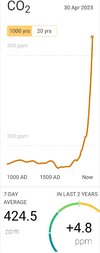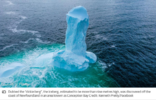- Aug 15, 2015
- 38,673
- 92,384
I guess if people aren't happy with the supply of something then they should keep demanding it anyway.
It's not like a group of people changing lifestyles and making choices at the bottom that becomes a larger group and bigger movement has ever affected change higher up.
Sent from my Nokia 7.2 using Tapatalk
You realise that's what people are doing right? And yet they're still frustrated and angry because the changes at the top aren't being made fast enough. Which was the point to begin with and how the discussion started..
I posted an article about how young people are depressed the planets ****ed.
- old mate says it's their own fault because they use the air con
They can be as off grid/zero carbon footprint as they want, it's still depressing knowing the generations before them have ****ed the planet.
Last edited:











